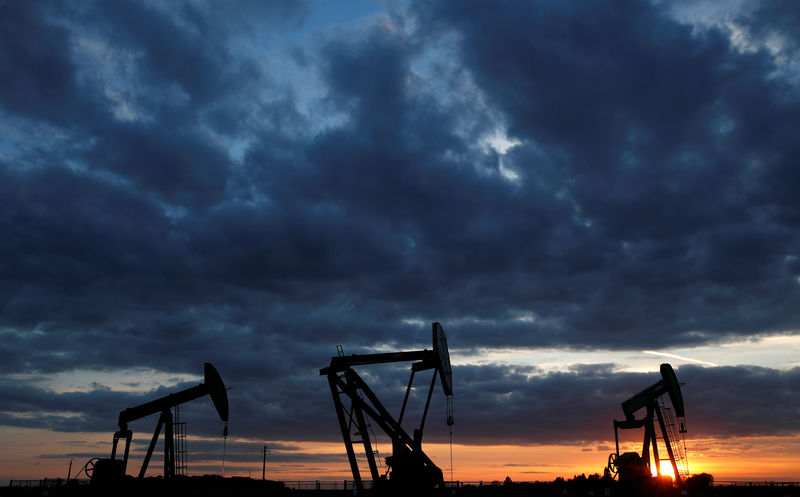
Investing.com– Oil prices settled higher Wednesday, as a cooler inflation report supporting rate-cut hopes, but gains were kept by an unexpected build in weekly domestic crude supplies and hawkish Federal Reserve projections calling for a fewer ate cuts.
At 14:30 ET (18:30 GMT), rose 0.8% to $82.60 a barrel, while climbed 0.7% to $78.50 a barrel.
Fed in hawkish surprise; CPI increases by less than expected
The Federal Reserve kept interest rates steady on Wednesday, but now sees just one rate cut for the year, as inflation is expected to trend higher than previously expected.
“The shifts in the projections of the Fed’s SEP are more hawkish than we anticipated,” Economists at Jefferies said in a Wednesday note following the decision.
Data released earlier Wednesday showed that U.S. increased by less than expected on an annualized basis in May, suggesting to a possible easing in price pressures that could influence how Federal Reserve policymakers see the future path of interest rates.
The Labor Department’s consumer price index rose by 3.3% last month, decelerating slightly from 3.4% in April. Month-on-month, the slowed to 0.0% from 0.3%.
Recent signs of U.S. labor market strength and sticky inflation had pointed to rates remaining high for longer – a scenario that bodes poorly for global economic growth and potentially oil demand.
US inventories surprise build
Official showed crude inventories gained 3.7M barrels in the week through Jun. 7, confounding expectations for a draw of 1.2M barrels.
As well as crude supplies, gasoline and distillate stocks also rose 2.6M and 881,000 respectively, denting hopes that U.S. fuel consumption was picking up with the onset of the travel-heavy summer season.
IEA cuts 2024 demand growth forecast
These gains occurred despite the International Energy Agency cutting its forecast for 2024 global crude demand by 100,000 barrels per day to 960,000 bpd, in its , citing sluggish consumption in developed countries.
The Paris-based agency also forecast global oil demand peaking by 2029 and beginning to contract the following year.
This contrasted with a more optimistic forecast from the Organization of Petroleum Exporting Countries on Tuesday, which maintained its outlook for strong global oil demand in 2024. The cartel said in its that its recent decision to maintain its output curbs presented the possibility of a supply deficit in the third quarter.
(Peter Nurse, Ambar Warrick contributed to this article.)

